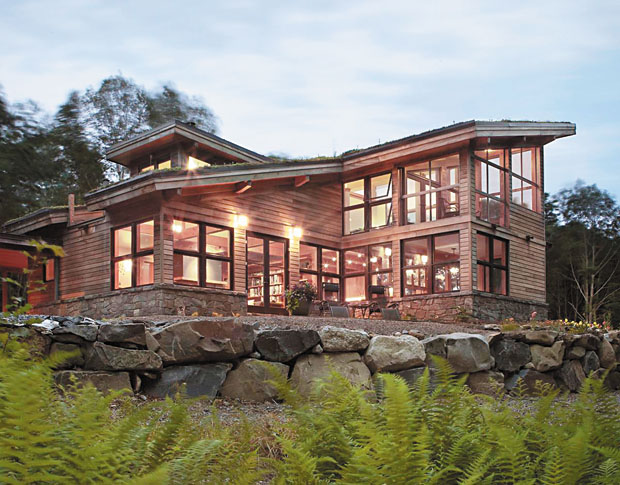Why hardwood flooring works in the outdoors
Find new inspiration for your next home project. If you’re looking to upgrade your home’s exterior, include American hardwoods in the mix. New environmentally friendly treatment methods now make hard-wood an excellent and great looking material choice for outdoor living spaces.
“American hardwoods in outdoor applications used to be taboo,” said American Hard-wood Information Center’s Linda Jovanovich. “These days, restrictions and concerns are distant memories, and hardwoods are confidently being installed outdoors as siding, decking, fences — you name it — thanks to non-chemical heat treatments that improve the dimensional stability and durability of this wonderful product.”
A recipe for success
Thermal modification is a non-toxic process that simply “cooks” wood in heat. During the process, oxygen is removed from the oven to prevent the wood from burning. The high heat — in excess of 400 degrees Fahrenheit — produces a naturally durable wood that permanently is resistant to water, insects and decay.
Director of sales and marketing intelligence at Frank Miller Lumber Co. Bob Miller said that because the treatment process drastically reduces modified wood’s moisture content and limits its ability to absorb moisture, products are more dimensionally stable — making them less prone to cupping, warping, expansion and contraction with changes in humidity.
“The process also removes organic compounds from wood’s cells, eliminating a food source for insects and fungi,” Miller added. “Simply put, thermally modified wood is a natural and healthy alternative to chemically preserved, pressure-treated wood. And it’s affordably priced, too.”
At home in the outdoors
Scott Seyler, who handles export sales at Northland Forest Products, said the durability and dimensional stability of thermally modified hardwoods are major advantages that interest homeowners who are exploring outdoor home-improvement projects.
“With all that thermally modified wood offers, it’s quickly becoming popular for siding, decking, trim and flooring,” Seyler explained.
Finishing it off
Through the thermal modification process, a rich chocolate color results, highlighting the wood’s natural beauty and providing a luxurious look. But like any other wood, over time, if not sealed, thermally modified hardwood naturally will weather to a shade of gray because of exposure to the sun’s ultraviolet rays. Atlanta Harwood Corp.’s vice president of domestic sales Hal Mitchell recommended applying a UV-inhibitor sealant to all sides and ends of the wood, to preserve its color and prevent graying.
Looking for ideas? Consider adding timeless beauty to your home’s exterior with thermally modified American hardwoods. To learn more visit the American Hardwood Information Center at HardwoodInfo.com for design ideas and inspiration.
This article is courtesy of Brandpoint.
